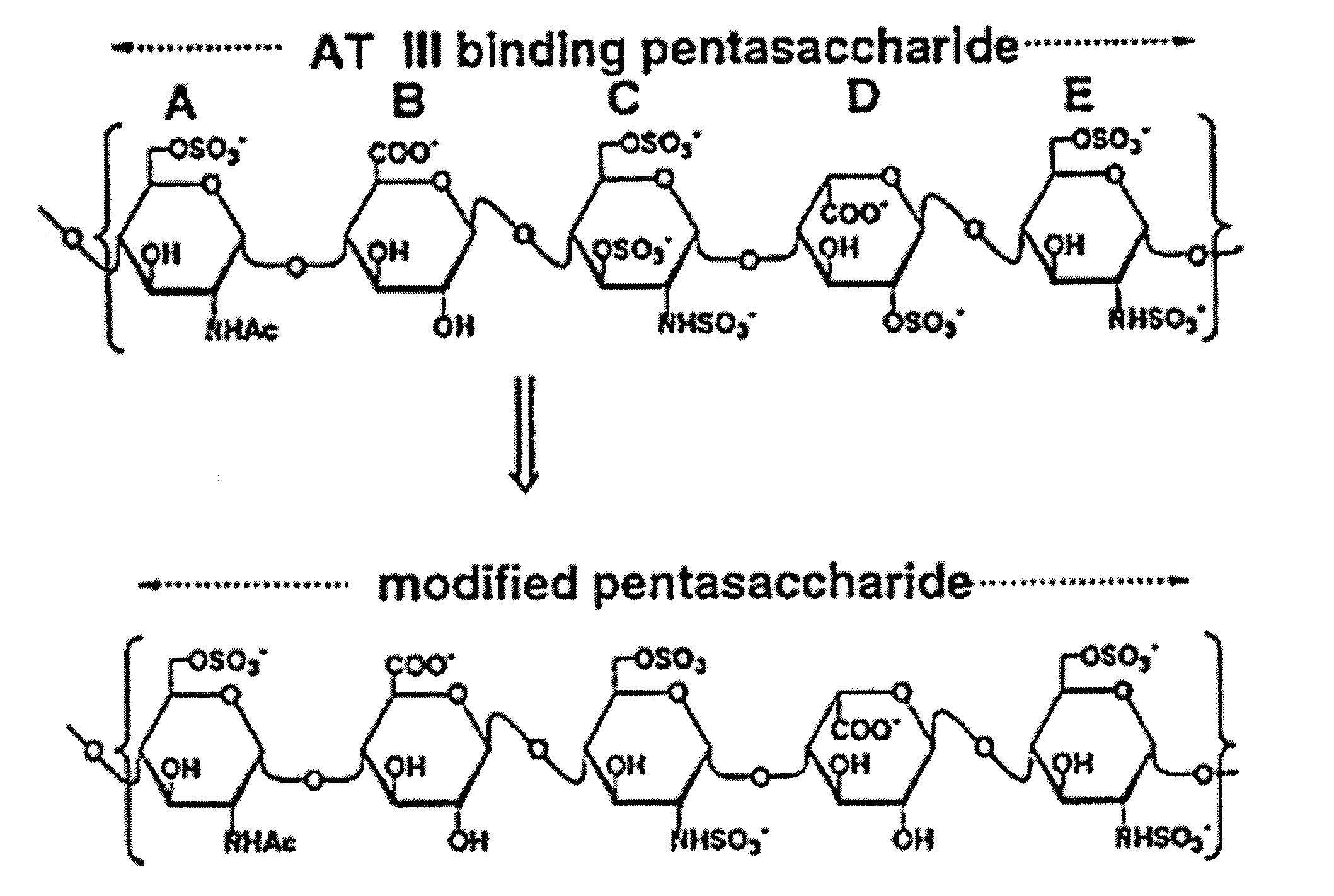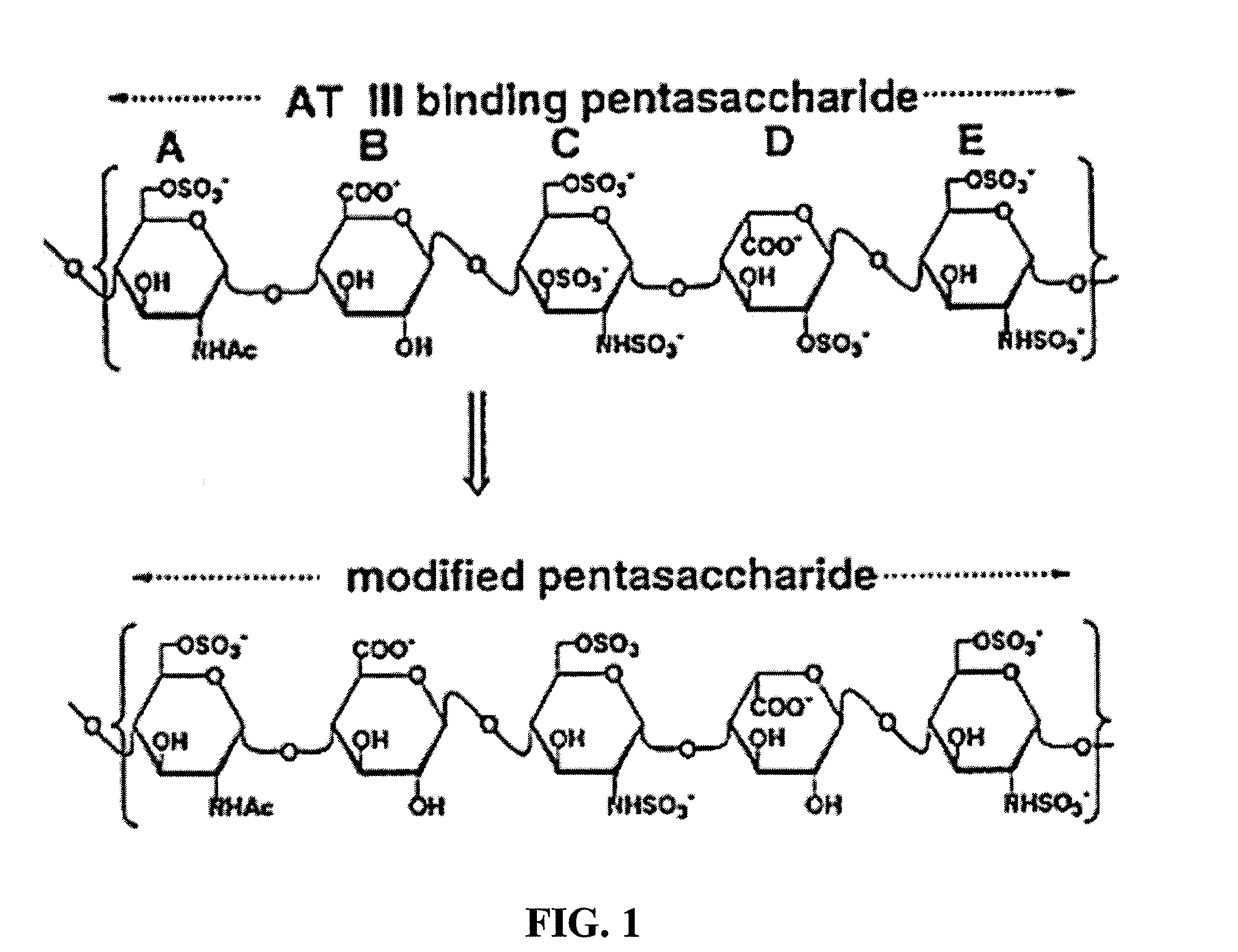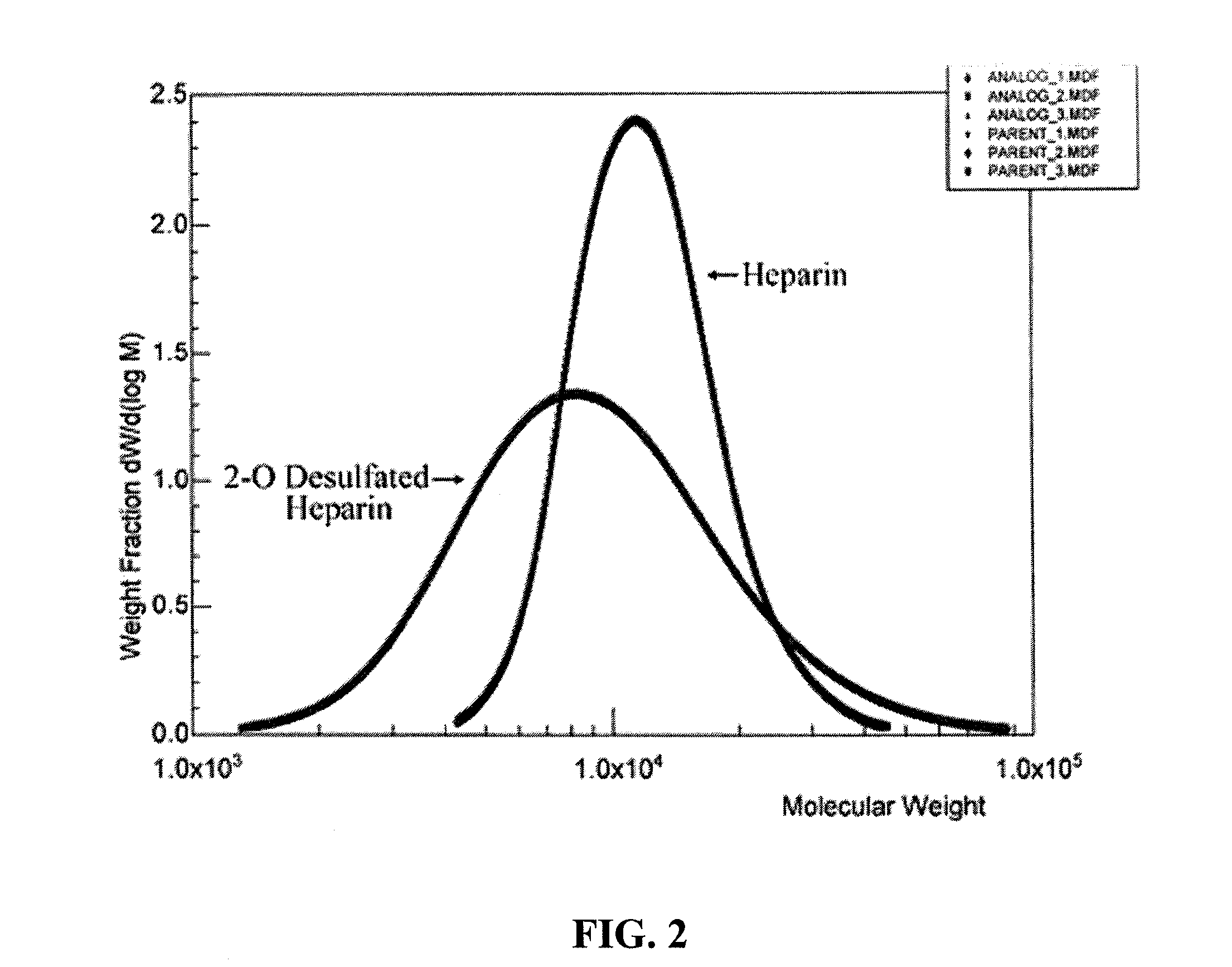Method for blocking ligation of the receptor for advanced glycation end-products (RAGE)
- Summary
- Abstract
- Description
- Claims
- Application Information
AI Technical Summary
Benefits of technology
Problems solved by technology
Method used
Image
Examples
example 1
Production of Nonanticoagulant 2-O Desulfated Heparin
[0138]Partially desulfated 2-O desulfated heparin (ODS heparin) was produced in commercially practical quantities by methods described in U.S. Pat. No. 5,668,188; U.S. Pat. No. 5,912,237; and U.S. Pat. No. 6,489,311. Modification to ODS heparin was made by adding 500 gm of porcine intestinal mucosal sodium heparin from lot EM3037991 to 10 L (liters) deionized water (5% by weight final heparin concentration). Sodium borohydride was added to achieve 1% final concentration and the mixture was incubated overnight at 25° C. Sodium hydroxide was then added to achieve 0.4 M final concentration (pH greater than 13) and the mixture was lyophilized to dryness. Excess sodium borohydride and sodium hydroxide were removed by ultrafiltration. The final product was adjusted to pH 7.0, precipitated by the addition of three volumes of cold ethanol and then dried. The 2-O desulfated heparin produced by this procedure was a fine crystalline slightly...
example 2
Intravenous Injection of 2-O Desulfated Heparin to Achieve RAGE-Ligand Inhibiting Concentrations in the Bloodstream
[0156]To determine if levels of 2-O desulfated heparin reached sufficient concentration in vivo to suppress RAGE-ligand interactions and signaling, three groups of beagle dogs (n=4 each) were injected with 2-O desulfated heparin (ODSH) produced as in Example 3. Injections were given over 2 minutes in doses of 0 (saline control, group 1), 4 (group 2), 12 (group 3) and 24 mg / kg (group 4). Injections were performed 4 times daily for 10 days. On a daily basis, the total ODSH doses administered were 0, 16, 48 and 96 mg / kg. Whole blood was collected on study days 1, 2, 4, 6, and 8, at 15 minutes and 6 hours after the first injection of the day. Also, following the final ODSH injection, samples were collected at 15 minutes, and 1, 2, 4, 6 and 8 hours. All samples were collected in vacutainer tubes containing sodium citrate as an anticoagulant.
[0157]The concentration of ODSH wa...
example 3
Production of 2-O Desulfated Heparin that is Nonanticoagulant and is Inhibitory for Human Leukocyte Elastase
[0161]USP porcine intestinal heparin was purchased from a commercial vendor [Scientific Protein Laboratories (SPL), Wanaukee, Wis.]. It was dissolved at room temperature (20±5° C.) to make a 5% (weight / volume) solution in deionized water. As a reducing step, 1% (weight / volume) sodium borohydride was added and agitated for 2 hours. The solution was then allowed to stand at room temperature for 15 hours. The pH of the solution was then alkalinized to greater than 13 by addition of 50% sodium hydroxide. The alkalinized solution was agitated for 2-3 hours. This alkalinized solution was then loaded onto the trays of a commercial lyophilizer and frozen by cooling to −40° C. A vacuum was applied to the lyophilizer and the frozen solution was lyophilized to dryness. The lyophilized product was dissolved in cold (<10° C.) water to achieve a 5% solution. The pH was adjusted to about 6.0...
PUM
| Property | Measurement | Unit |
|---|---|---|
| Interaction | aaaaa | aaaaa |
Abstract
Description
Claims
Application Information
 Login to View More
Login to View More - R&D
- Intellectual Property
- Life Sciences
- Materials
- Tech Scout
- Unparalleled Data Quality
- Higher Quality Content
- 60% Fewer Hallucinations
Browse by: Latest US Patents, China's latest patents, Technical Efficacy Thesaurus, Application Domain, Technology Topic, Popular Technical Reports.
© 2025 PatSnap. All rights reserved.Legal|Privacy policy|Modern Slavery Act Transparency Statement|Sitemap|About US| Contact US: help@patsnap.com



